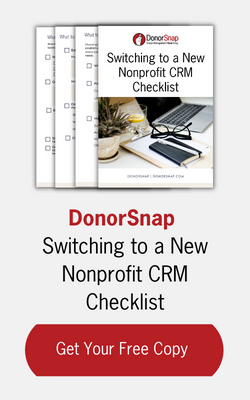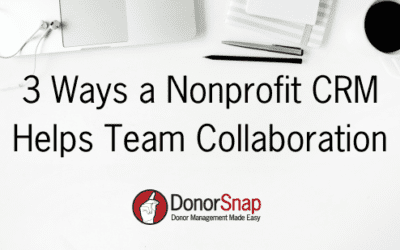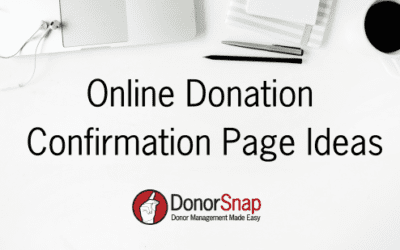Every year, nonprofits around the world send out their year-end appeal letter. This is one of the most essential pieces of communication a nonprofit will produce. About 28% of nonprofits raise between 26% to 50% of their annual funds from their year-end ask. So taking the time to write a powerful year-end appeal is important for nonprofits. This article will cover everything you need to know about writing a year-end appeal letter.
Table of Contents
What are Year-End Appeal Letters?
Should You Print or Email Year-End Appeal Letters?
When Should You Send Your Year-End Appeal Letters?
Who Should You Send Your Year-End Appeal Letters to?
How to Write a Good Year-End Appeal Letter?
Best Practices for a Successful Year-End Campaign.
Sample Time Line for Year-End Campaign.
Final Thoughts
What are Year-End Appeal Letters?
Every year most nonprofits will run a year-end campaign asking for donations. Year-end appeal letters are usually the main component of an annual appeal where the nonprofit makes their appeal for donations. Usually, the letter is printed and mailed via direct mail with a donation form or remittance envelope. Typically nonprofits send out year-end appeal letters in the last two months of the year. This kicks off the busy giving season and the year-end campaign.
Should You Print or Email Year-End Appeal Letters?
Your nonprofit should be taking a multichannel approach to year-end appeals. That means you should send both a physical letter and use email to support your campaign. Additional methods to add to your multi-channel campaign could include social media, text messaging, and in-person events.
When Should You Send Your Year-End Appeal Letters?
Most nonprofits will send their year-end appeal letters by the second week in November. According to Nonprofit Source, 30% of annual giving occurs in December. So the end of the year tends to be the most important time for fundraising. Year-end appeal letters are meant to reach supporters during the holiday season when people are feeling more generous and also donating before year-end for tax purposes.
Who Should You Send Year-End Appeal Letters to?
You should always segment your mailing list for your year-end appeal letters. Do not send your year-end appeal letter to your entire mailing list. For one, you will be wasting money if you are mailing letters to donors who have gone stagnant. You also don’t want to mail your letters to donors who have already given in the current fiscal year. Make sure you adjust your mailing lists to exclude people who have already given and make sure they have received a donation acknowledgment letter.
Make sure you take time to sit down with your team and decide who you will be reaching out to. For example, you may decide to send to donors who have given in the last three years. You should also consider if you will segment out major donors for a more personalized appeal which is a common practice among nonprofits.
How to Write a Good Year-End Appeal Letter
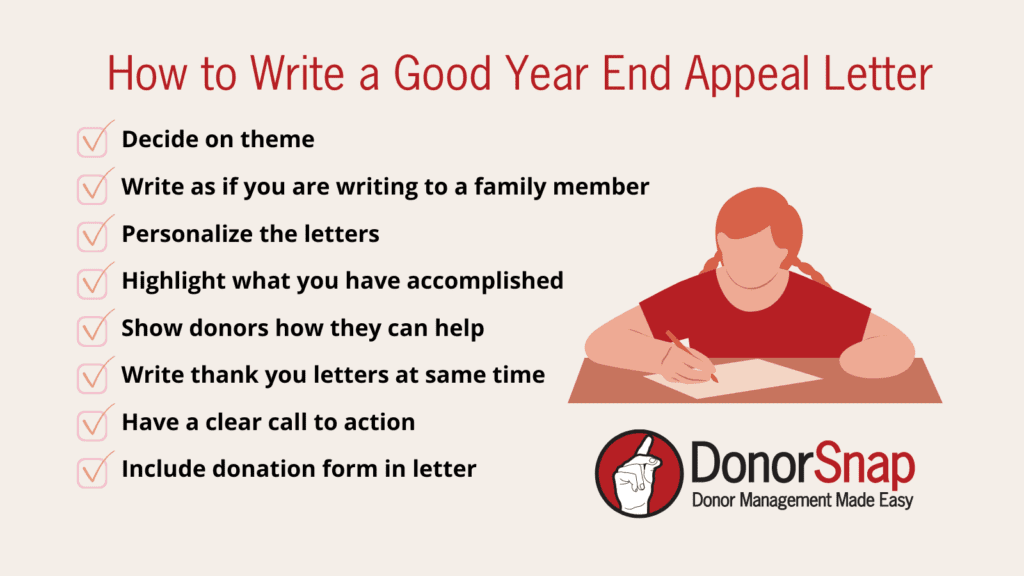
At the end of the year, many people’s inboxes and mailboxes will be flooded with year-end appeal letters. So how can you make sure your message stands out from the crowd? The following best practices will help you write a fabulous appeal letter that will inspire donors to give.
Decide on a theme for your year-end campaign and letter
It is important to start planning early for your year-end campaign. The year-end giving season can be busy and it is important to get all of your ducks in a row early. Read, 14 Tips to Streamline Year-End Giving here. One of the first steps you should do before writing your letter is to decide on the theme for your year-end campaign. To do this, think about what your nonprofit has accomplished over the last year. Do you have a great story you want to share? Or a powerful message that will drive donations? This is your chance to get creative, so take time to brainstorm with your team.
Write the letter as if you are writing to a friend/family member
When you are asking a donor for money, you want to create a personal connection with them. Nothing will turn readers away faster than a dry and stuffy message that looks like a form letter. You will want to avoid language like “On behalf of org. XYZ” and have the letter be written from one person to another. Keep the tone warm and conversational as if you were writing a letter to a friend or family member.
Personalize your year-end appeal letters
Personalization goes a long way with all of your nonprofit communications. Your appeal letters should always address your donors by their respective salutation. Depending on what you track in your nonprofit CRM, you can include other personal details, such as the last gift amount or how many years they have been giving. These personal touches show that you value the donor as an individual and that you are paying attention to their gifts.
Highlight what you have accomplished in the past year
It is really important to show your donors what you have accomplished in the year. This can help inspire them to keep giving. This is a great opportunity to incorporate powerful storytelling and pull at your reader’s heartstrings. Think of something really special that happened within your organization and pull that into the letter. For example, you can use a specific example such as an individual who your nonprofit helped and a snapshot of where they are now.
Tell the donors how they can help make a difference
Your appeal letter should be donor-centric, meaning that you highlight how their donation will help move you forward with your mission. As much as you want to talk about all the great things you have done, make it very clear you can’t do it without their support. Include language like, “your donation will help us continue to provide meals to students in need.”
Have a very clear call to action
At the end of the letter, you will want to have a clear call to action. Be very clear that this letter was intended to ask for their support. The more specific you can get the better. Instead of saying something like “donate today” you can get more creative with your call to action. Think of using powerful language that will inspire action. For example, “Can we count on your support to ensure no child goes to school hungry?”
Include a donation form or remittance envelope in your appeal letter
You should make it easy for your donors to donate. Include a remittance envelope or donation form in your appeal letter. This form should offer different giving options such as cash, check, and a place to leave credit card information. You can also include a link to donate online if they prefer. Additional items to include on your donation forms are mailing list opt-ins, a space for memorial/honorarium gifts, and an option to make an anonymous gift. In addition, always leave an option to sign up as a monthly donor.
Write your thank you letter at the same time you write your appeal letter
Your thank you letters are just as important to fundraising as your appeal letters. Assuming you are working with a theme or a yearly message, it is helpful to write both letters at the same time. That way all of your communications will have a cohesive flow and will work well together. For more information on writing a killer thank you letter read: Donor Acknowledgment Letters: A Complete Guide.
Best Practices for a Successful Year-End Campaign
Writing a great year-end appeal letter is only part of the process for a successful year-end campaign. Once you have your campaign planned out and your letter written, you can continue working on the overall campaign.
Take a Multichannel Approach
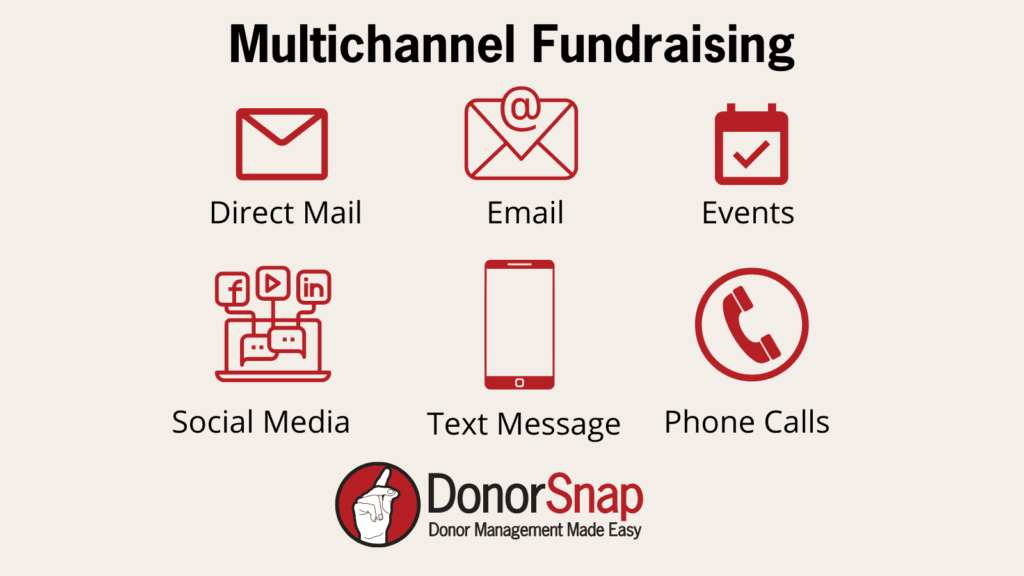
As mentioned before, you should have a multichannel campaign for your year-end ask. This means incorporating email, social media, and text messaging into your year-end ask. Taking a multichannel approach to fundraising is important for a number of reasons. For one, it will help reach your different audience segments. For example, 44% of Baby Boomers prefer to donate via physical check. However, Generation Z is unlikely to donate to a cause with a poor social media presence. So while you might not get many donations from boomers via social media, you should still have campaign elements there to inspire the younger generations to give.
Should Your Email Appeals Be Different Than Your Print?
It is okay if you use the same message in your email appeals as your print, however, put thought into your subject line. Your email subject line will make or break if someone opens the email. Do not have your subject line be something like “XYZ Organization Annual Appeal”. The goal of creating a great subject line is to pique the reader’s interest without giving too much away. This could sound something like “Last Year We Cleaned Up 500 miles of Beaches, Find out How”.
Another difference between your print and email campaigns is where you will send the reader. Your print mailings will likely include a donation form or remittance envelope. Your email campaigns will lead to a landing page on your website. When you send your email campaigns, think about how to optimize your donation page to drive more donations.
Track Your Progress
As with any campaign, you should track your progress along the way. This will help your team stay on top of setbacks and will let you know if you need to make an extra push during the giving season. With so much going on during this busy giving season it can feel overwhelming to add reporting to the mix. However, you can easily add goals to your dashboard in DonorSnap. This way, you can see your progress as soon as you login into DonorSnap without generating a report. Having this information handy will help keep you on track, and also provide great content for you to share with your audience.
Sample Timeline for Year-End Campaign
When planning your year-end campaign, when should you start? How much communication is enough and how much is too much? Below is a sample timeline that you can use to map out your communication. You can make adjustments based on your audience and capacity. If you are using social media don’t be afraid to post every day with supporting content for your year-end campaigns.
October:
- Have your letter draft finalized for review
- Connect with a print house and get all necessary documents in order
- Build and segment your mailing lists
November
- Send out print appeal within the first two weeks of November
- Send a follow-up email a week after the print letter
- Run a Giving Tuesday Campaign online that ties into your appeal campaign
- Continuously share information across social media platforms
December
- Send out a reminder postcard in early December
- Make phone calls to major donors
- Run a text message campaign
- Send out 2nd email appeal reminder
- Share updates and progress across social media
Final Thoughts
A well-crafted year-end appeal letter will help your nonprofit close out your year strong. It is important to plan ahead and have a cohesive theme for your year-end appeal letter. Think about what your nonprofit has accomplished over the previous year and look for opportunities to weave storytelling into your letters. Also, make sure you personalize your letters and segment your mailing lists for year-end campaigns.
What will ultimately lead to the most success in your organization is to measure and test. Keep your database organized so you can easily track campaign success over the years to get a good read on what performs the best. Plan ahead and get started early to make sure you are ready to go when the year-end busy season starts.

